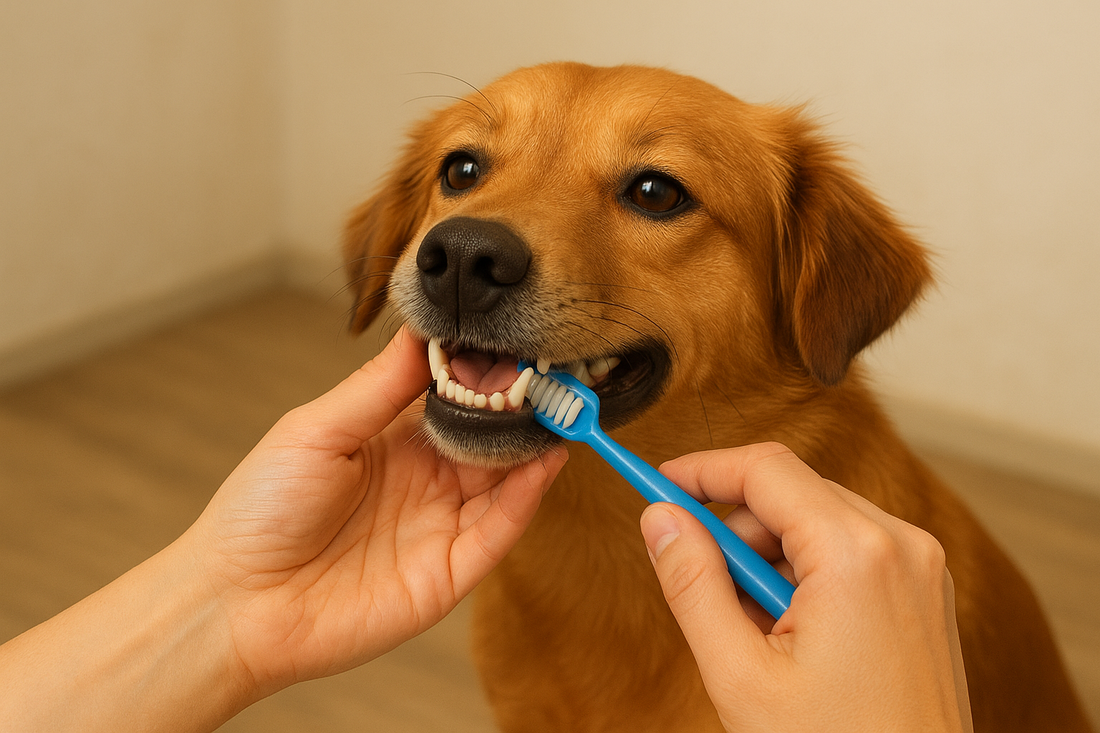
At-Home Dog Dental Care Guide: How to Brush, Best Chews & Signs of Dental Problems
Share
When most pet parents think about their dog’s health, they imagine exercise, food, and vet checkups. But did you know that dental care for dogs is just as important? Poor oral hygiene can lead to plaque buildup, gum disease, bad breath, and even serious health issues like heart or kidney infections.
The good news? With the right tools and habits, you can create an at-home dog dental care routine that helps your pup live a longer, healthier life.
Why Dental Care Is Important for Dogs
Over 80% of dogs show signs of periodontal disease by age three. Once tartar and bacteria settle in, they can cause painful infections and tooth loss. That’s why preventing dental problems in dogs is far easier—and safer—than treating them later.
By learning how to brush your dog’s teeth at home and providing the right chews, treats, and toys, you can dramatically reduce the risk of oral disease.
How to Brush Your Dog’s Teeth at Home
Brushing is the gold standard for dog dental hygiene. It removes plaque before it hardens into tartar and helps keep your pup’s breath fresh.
Step-by-step guide to brushing your dog’s teeth:
- Use a dog toothbrush or a soft child’s brush for small breeds.
- Choose dog-safe toothpaste (never human toothpaste—fluoride is toxic to dogs).
- Start slow: let your dog taste the toothpaste first.
- Gently lift their lip and brush in small circles on the outer surfaces of their teeth.
- Aim for daily brushing, but even 3–4 times per week makes a big difference.
- End with praise and a reward to make it a positive experience.
Best Dental Chews and Toys for Dogs
Not all dogs love brushing. That’s where dog dental chews and chew toys come in. Chewing naturally scrapes teeth and massages gums, reducing plaque and tartar.
When shopping for the best dental chews for dogs, look for products approved by the Veterinary Oral Health Council (VOHC). Durable rubber chew toys or rope toys also encourage healthy chewing while fighting boredom.
Dental Treats and Special Diets
Some dental dog treats are designed to freshen breath while tackling tartar. You can also find dental diets with specially shaped kibble that helps scrub your dog’s teeth as they chew.
These options are great for supplementing brushing, but they shouldn’t replace it. Think of them as tasty helpers in your dog’s oral care routine.
Signs Your Dog Needs a Dental Check-Up
Even with the best at-home care, dogs sometimes need professional cleanings. Contact your vet if you notice:
- Bad breath that won’t go away
- Yellow or brown buildup on teeth
- Red, swollen, or bleeding gums
- Dropping food or trouble chewing
- Excessive drooling or pawing at the mouth
Regular vet checkups combined with at-home care are the best way to prevent painful dental disease.
Professional Dog Dental Cleaning
While at-home dental hygiene is key, professional cleanings allow vets to remove tartar under the gumline and check for hidden problems. Most dogs benefit from cleanings every 1–2 years, depending on age and breed.
Final Thoughts: Building a Dog Dental Routine That Works
At-home dental hygiene for dogs doesn’t have to be complicated. A simple routine of brushing your dog’s teeth, offering dental chews, and scheduling regular vet visits will protect your pup’s mouth—and their overall health—for years to come.
